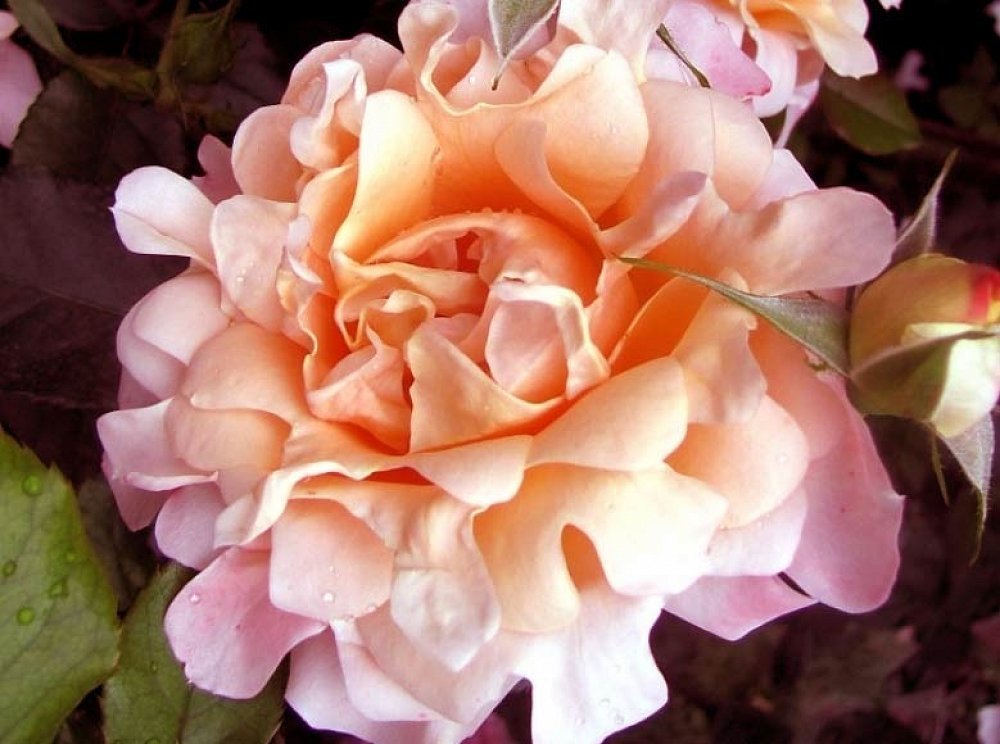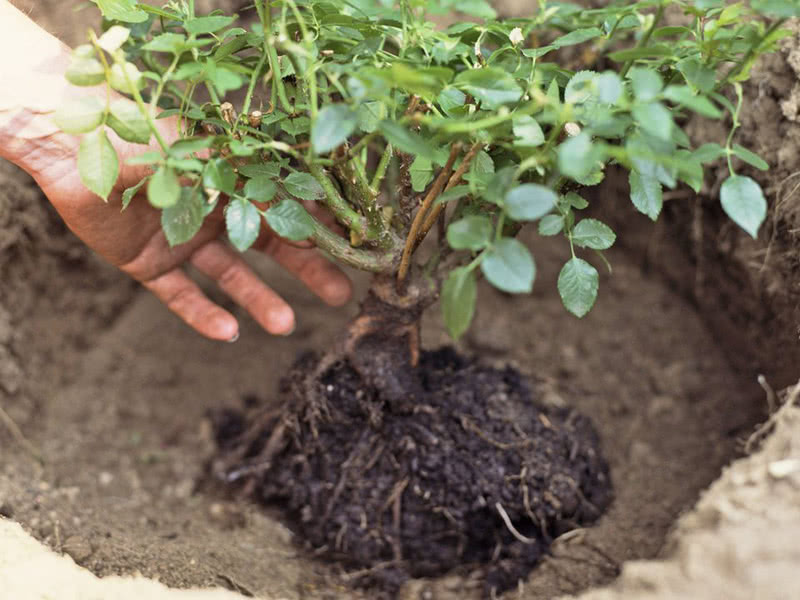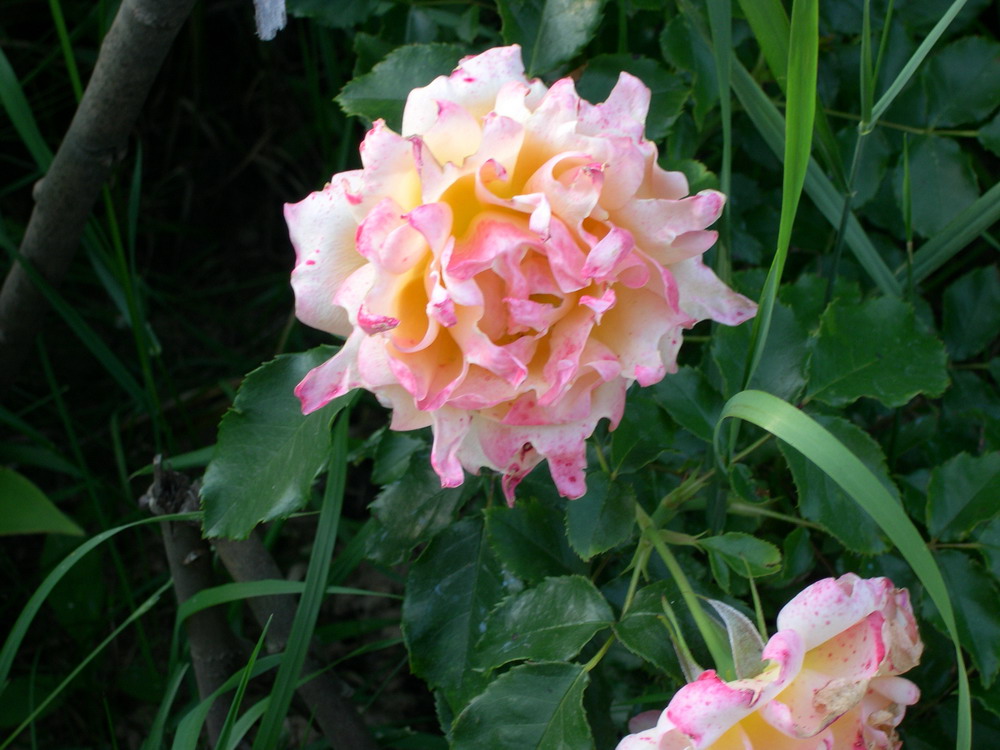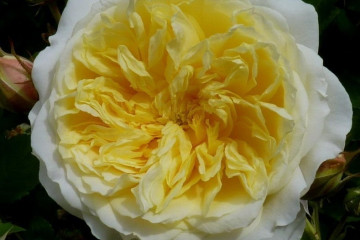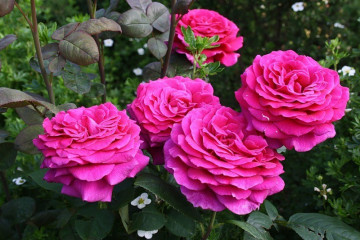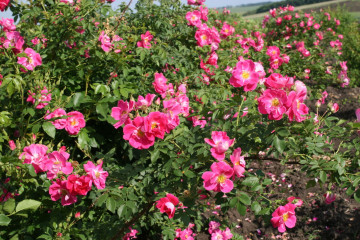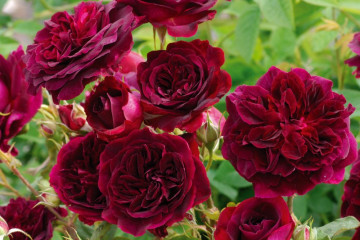Rose Ruffles Dream - description of varietal shrub
Content:
Delicate rose flowers can decorate any place: a garden, a public flower bed, a home garden. The variety of varieties, colors and types allows each grower to choose the most beautiful options that will not only delight the eye, but also meet the owner's care capabilities. The topic of today's article is the Ruffle Dream rose.
Rose Ruffles Dream - what is this variety
This kind of extraordinary, delicate rose with special petals, as if carved by skilled craftsmen, was bred in 2001 in the Netherlands. A distinctive feature of these flowers is their abundant flowering several times per season. Floribunda Raffles Dream roses can be grown both on balconies and terraces in containers, and on flower beds or borders. A large selection of special varieties, such as Mystics or Passions, will not leave anyone indifferent, and flowers with a touch of chocolate will drive sweets lovers crazy.
Large flowers up to 10 cm in size are distinguished by a special density of petals and their doubleness, the presence of a wavy, almost filigree, border. They are located on the stems both singly and up to 5 pieces. in the brushes, attracting attention with delicate apricot, salmon shades.
Thanks to its delicate, sweetish and subtle aroma, a feeling of romance is created.
The main advantages of Raffles roses include:
- high resistance to low temperatures;
- maximum ease of care;
- resistance to many flower diseases.
There are practically no disadvantages of the species in question.
Growing a flower in the open field
Rose Raffles Dreams loves good lighting, but does not tolerate direct sunlight, so slightly shaded areas with sufficient moisture, but without stagnant water, will be the best place for planting. A suitable soil type is humus-rich loam.
Preparing the soil before planting is done in advance: the site is dug onto a shovel bayonet, mineral fertilizers and humus are applied. The landing pit is made about 30 by 30 cm in size, 40 cm deep. At the bottom of the pit, an elevation is formed, on which the roots shortened to 25 cm are neatly laid out.
After that, the planting hole with the seedling is carefully dug in with soil, avoiding the appearance of air pockets. To do this, the earth is tamped with hands, and then thoroughly spilled with water. After absorbing moisture, it is best to mulch the root zone with a layer of humus about 6-8 cm. The first 2-3 weeks after planting, the seedlings are shaded from the sun.
Plant care
Young seedlings are watered quite often, keeping the soil moisture and preventing it from drying out, about once every 3-4 days. Adult bushes are watered a little less often, once a week.
Another important aspect of maintenance is loosening the soil, it should not exceed 10 cm in depth, and be done as needed.
Also, feeding is a very important process that cannot be ignored. At the beginning of spring, nitrogenous fertilizers must be added to the soil. For the entire flowering time of roses, it is necessary to carry out 2-3 additional fertilizing with organic and complex fertilizers, and after the end of flowering and before the plants leave for the winter, potash fertilizers are added to the soil.
Raffles roses should be pruned twice a year: in the spring after the establishment of warm weather, but before the buds swell, and in the fall before the first frost. It includes the removal of all damaged, broken and weak shoots, as well as shoots older than two years. In the fall, it is also important to remove those shoots that did not produce flowers. Transplanting bushes is carried out according to the same rules as planting a plant.
Raffles rose bloom, lace petal varieties
Different varieties of flowers of this species can bloom both continuously from June to the end of September, and in several main waves, in which the number of flowers will be much greater than between them. In the process of flowering, it is very important not to forget to apply top dressing, water the bushes in a timely manner (in the evening and at the root), and also remove faded buds.
The lack of flowering may be due to irrigation problems. We are talking about overflow, drying out of the soil, as well as an incorrectly chosen place for planting - a too dark area. You can fix such problems yourself.
Flower propagation
Cuttings of bushes can be done throughout the summer. It is important that on the shoot chosen for reproduction there are live dense buds and the buds have already faded. From above, the shoot is cut to the nearest internode, and from below - after three buds. The bottom edge is best treated with a root growth stimulant, and then placed in a prepared and moistened substrate. The pot with the handle is covered with glass or foil, avoiding contact of the material with the plant, and left for up to a month at an average temperature of 20 ° C away from heating appliances.
Diseases, pests and ways to control them
Despite good resistance, Raffles roses are susceptible to downy mildew and black spot at the end of the flowering season. It is not difficult to notice the appearance of these diseases: the characteristic manifestations on the leaves are striking. You can cope with these diseases with the help of special tools.
Among pests, pests that are standard for all roses can be dangerous, but, as a rule, such cases are extremely rare.
Roses with double petals will adorn any garden, flower bed and even home. To choose your unique and most beloved rose, you need to carefully study the descriptions of their colors, and some will definitely please your taste.
